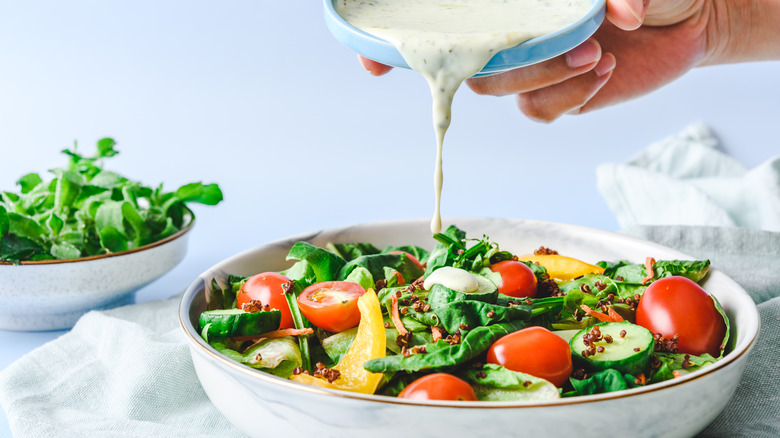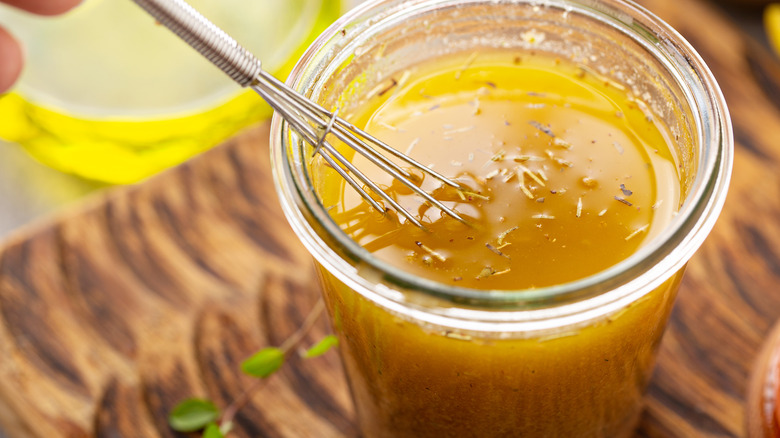What To Consider Before Buying Salad Dressing At The Grocery Store
A salad without dressing is about as fun as a pizza without cheese. Dressings add fat to the dish, and fat adds flavor. But unfortunately, when it comes to store-bought salad dressings, we have no control over which fat that is.
They say only two things in life are certain — death and taxes. From a culinary perspective, we can toss in less-than-healthy oils in most store-bought items to that list. Unfortunately, due to cost margins and availability, the odds are organic extra-virgin olive oil is not the first choice when it comes to products and dishes containing fats. Topping this list of often offenders is salad dressing. Oil and vinegar go hand-in-hand for dressings and when it comes to the bottled basics, that oil is probably not the healthiest option, points out Dr. Cate.
So what's a salad lover to do? A Caesar salad without its namesake sauce is just a fork away from rabbit food. Worry not; there is a simple solution to keep your lettuce anything but naked.
Make your own dressing
The good news is that salad dressings are one of the easiest sauces to whip up yourself. It doesn't take a culinary degree or fine-dining chops to put together the perfect, palatable emulsion. All it takes is a little know-how and some general rules of thumb.
Just like the cocktail's golden ratio, salad dressings have a standard, simple formula — 3:1. That's 3 parts oil to 1 part vinegar, plus a fork and bowl, and you're on your way to a healthier, homemade dressing. In addition, this oil and vinegar concoction is now a blank canvas to which you can add your favorite flavors, from fresh herbs and spices to a dab of dijon for emulsification.
Emulsify is just a fancy way of saying combining. Oil and vinegar infamously do not mix, explains Science Friday, but throw in a little mustard, and it's a marriage made in heaven. Once you get the basics down, pat and begin to play around, you'll happily put down that bottle.

